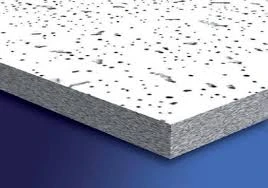- Afrikaans
- Albanian
- Amharic
- Arabic
- Armenian
- Azerbaijani
- Basque
- Belarusian
- Bengali
- Bosnian
- Bulgarian
- Catalan
- Cebuano
- Corsican
- Croatian
- Czech
- Danish
- Dutch
- English
- Esperanto
- Estonian
- French
- German
- Greek
- Hindi
- Indonesian
- irish
- Italian
- Japanese
- Korean
- Lao
- Malay
- Myanmar
- Norwegian
- Norwegian
- Polish
- Portuguese
- Romanian
- Russian
- Serbian
- Spanish
- Swedish
- Thai
- Turkish
- Ukrainian
- Uzbek
- Vietnamese
дец . 16, 2024 05:49 Back to list
Installation Guide for Plasterboard Ceiling Access Hatches in Residential Spaces
Understanding Plasterboard Ceiling Hatches A Comprehensive Guide
When it comes to home construction and renovation, ceiling hatches often play an essential yet overlooked role. In particular, plasterboard ceiling hatches serve as convenient access points to spaces above the ceiling, such as attics, ducts, and plumbing areas. Understanding their importance can help homeowners and builders make informed decisions about their installation and maintenance.
What is a Plasterboard Ceiling Hatch?
A plasterboard ceiling hatch is a panel that integrates seamlessly into the ceiling, providing access to hidden spaces. Typically made from the same material as standard plasterboard ceilings, these hatches are designed to blend into the surrounding surface, offering a clean and professional appearance. They can be found in various shapes and sizes, depending on the intended use and the available space.
Why is a Ceiling Hatch Important?
1. Access to Utilities One of the primary functions of a plasterboard ceiling hatch is to provide access to utilities that might require regular maintenance, such as electrical wiring, plumbing, or HVAC ducting. This accessibility can save time and reduce costs when repairs or inspections are necessary.
2. Space Efficiency In homes with limited space, maintaining accessibility to often-neglected areas can be invaluable. A properly installed hatch allows for quick inspections or repairs without the need to demolish parts of the ceiling.
3. Improved Safety By keeping access to utilities straightforward, homeowners can perform minor repairs or inspections safely, reducing the risk associated with more invasive procedures.
Installation of Plasterboard Ceiling Hatches
Installing a plasterboard ceiling hatch requires a careful approach to ensure a seamless finish and adherence to safety standards. Here’s a breakdown of the installation process
1. Choose the Right Location Before installation, decide where the hatch will be most beneficial. Common locations include hallways, closets, or utility rooms.
plasterboard ceiling hatch

2. Measure and Mark Once the location is determined, measure the desired size of the hatch. Mark the dimensions on the ceiling using a pencil.
3. Cutting the Ceiling Using a drywall saw, carefully cut along the marked lines. Ensure that you check for any electrical wiring or plumbing within the ceiling area before making any cuts.
4. Frame Installation Install a wooden frame in the ceiling opening. This frame will support the hatch and create a stable structure for mounting.
5. Hatch Installation Attach the plasterboard panel to the frame using screws. Ensure it fits snugly to avoid any gaps that could compromise its function or aesthetic appearance.
6. Finishing Touches Tape, mud, and sand the edges where the hatch meets the ceiling for a professional finish. Paint to match the ceiling color, making the hatch virtually invisible.
Maintenance and Care
Maintaining a plasterboard ceiling hatch is essential for ensuring it remains functional and aesthetically pleasing. Regular inspections are recommended to check for signs of wear, such as cracks or loose screws. Keeping the hatch clean and clear of obstructions will also prolong its lifespan.
Practical Uses Beyond Access
Apart from utility access, plasterboard ceiling hatches can serve additional purposes. For instance, they can be used for attic access, providing a space for storage or even transformation into a small room. Innovative designs can also enhance soundproofing in homes or serve as a means for enhancing insulation.
Conclusion
In summary, plasterboard ceiling hatches are more than just practical access points—they are integral components of modern home design. By facilitating easy access to utility spaces, ensuring safety, and providing a neat aesthetic, ceiling hatches prove their worth in both new constructions and renovations. Whether you're a homeowner looking to improve your living space or a builder aiming for efficiency, considering the implementation of a plasterboard ceiling hatch can be beneficial in the long run. With the right installation and maintenance, a plasterboard ceiling hatch can serve as a valuable asset for any home.
-
Transform Interiors with PVC Gypsum Ceiling: A Stylish, Durable, and Moisture-Resistant SolutionNewsMay.19,2025
-
The Smart Interior Upgrade: Discover the Durability and Versatility of Gypsum Ceiling Access Panel SolutionsNewsMay.19,2025
-
The Smart Choice for Interior Design: Discover the Value of PVC Gypsum Ceiling SolutionsNewsMay.19,2025
-
Mineral Fiber Ceiling Tiles: The Smart Blend of Performance and AestheticsNewsMay.19,2025
-
Mineral Fiber Ceiling Tiles: The Superior Choice Over Gypsum for Sound and Fire SafetyNewsMay.19,2025
-
Mineral Fiber Ceiling Tiles: Eco-Friendly Strength and Style for Every CeilingNewsMay.19,2025







